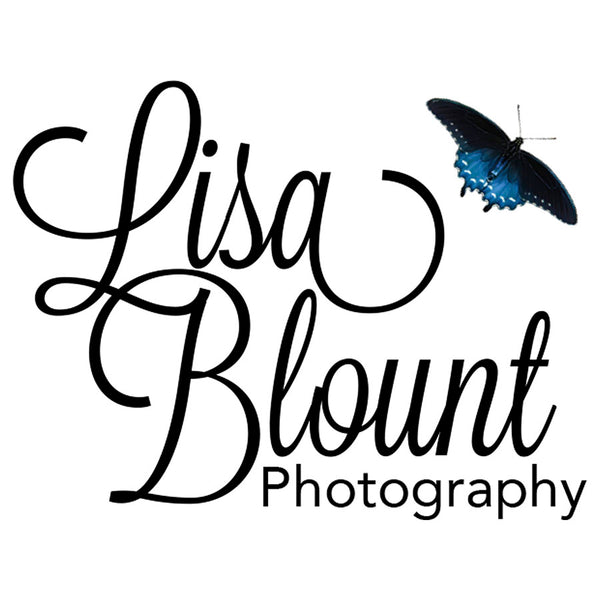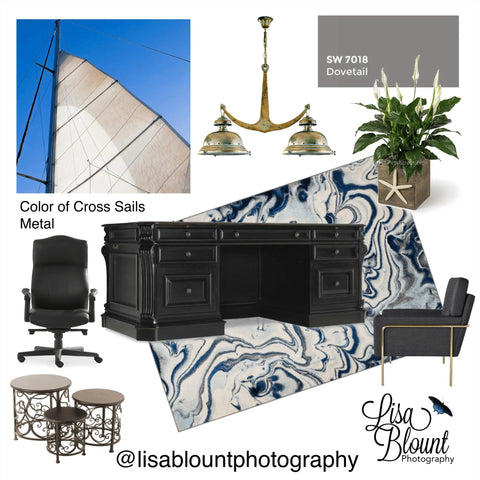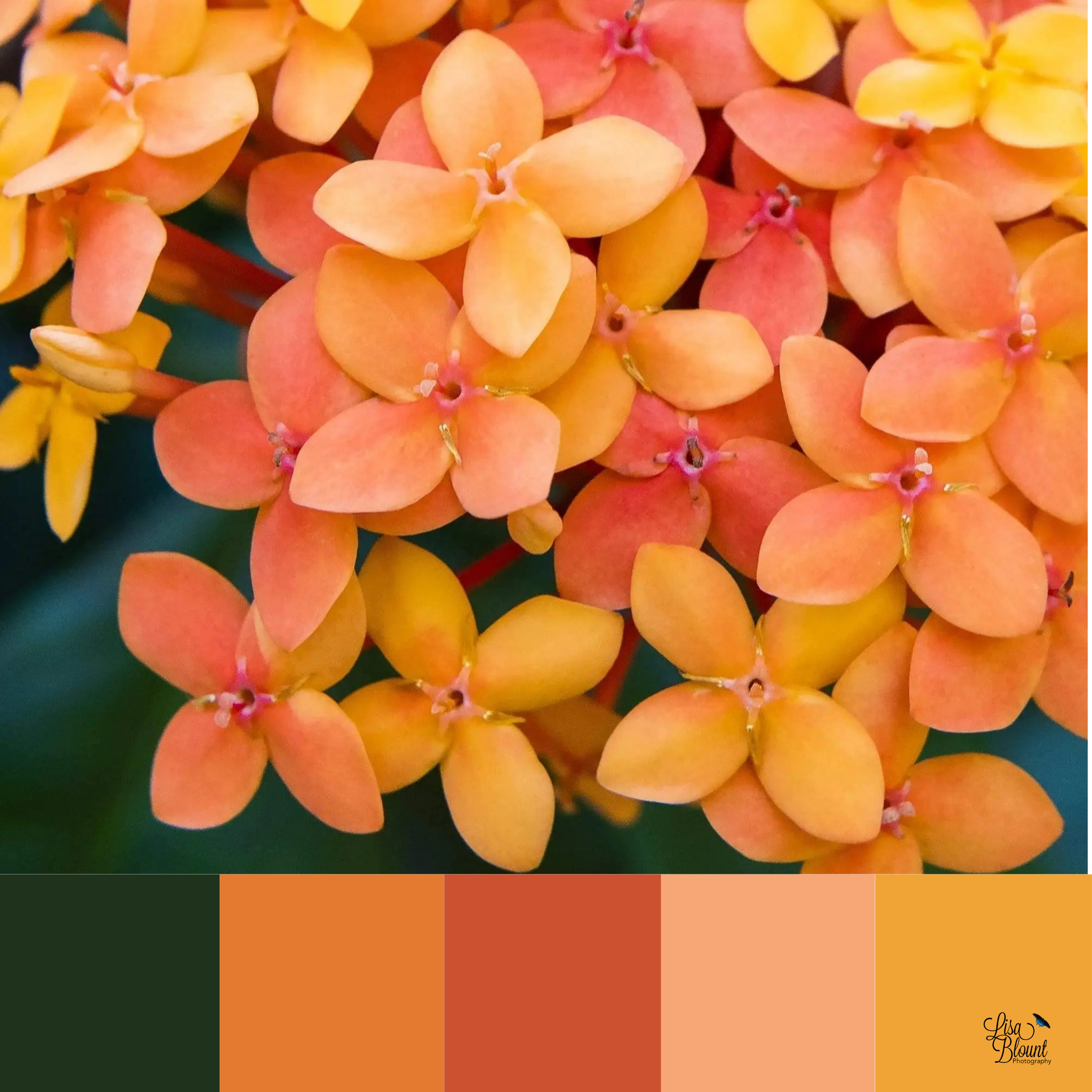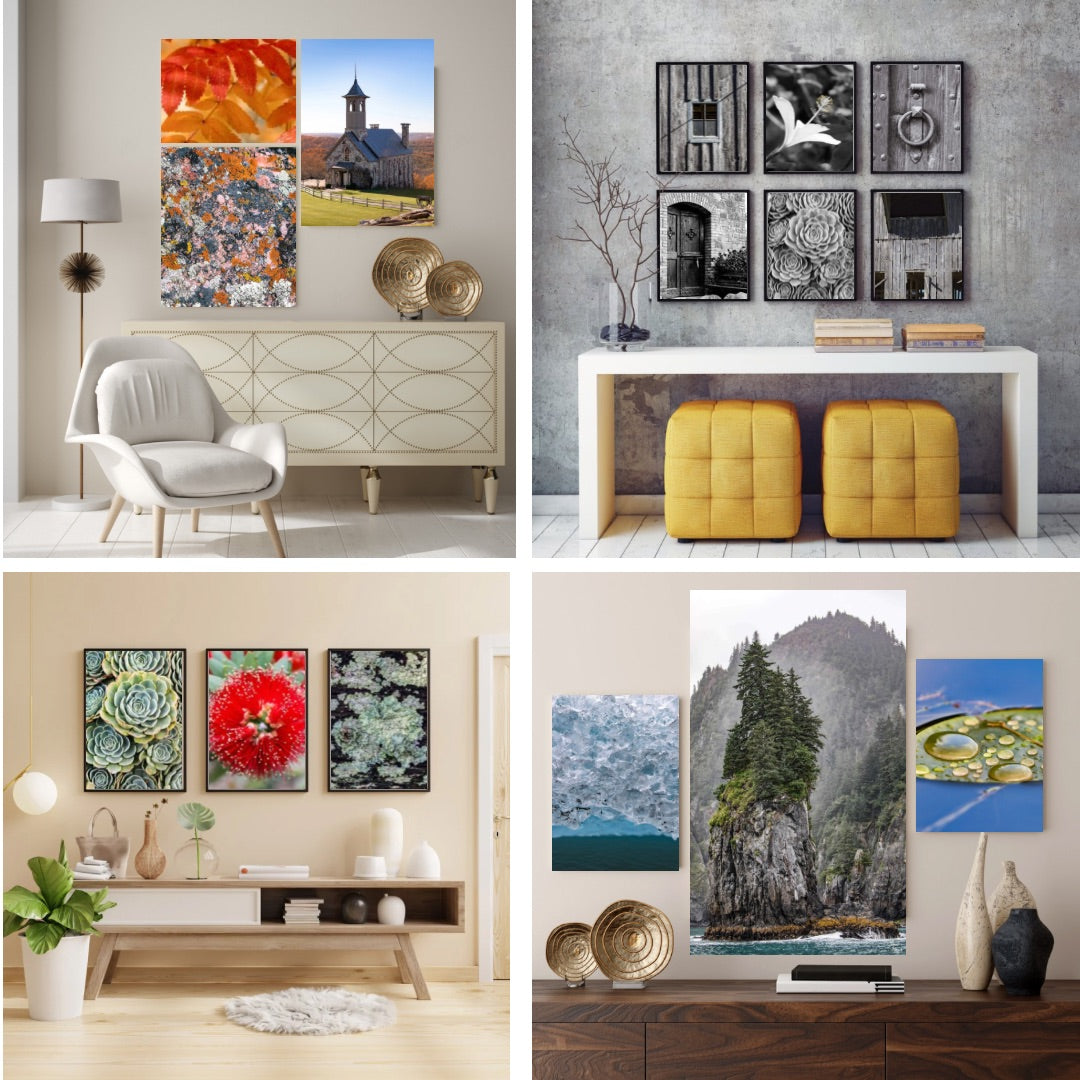Decor... to Sail Away With
Do you ever catch yourself staring out your office window—or maybe just your computer screen—thinking, “I’d rather be sailing”? Or fishing? Or anywhere near the water? Same.
That’s exactly what inspired this nautical moodboard. It’s built around one of my favorite abstract-meets-nature pieces, Color of Cross Sails. The view is from below a sailboat’s mast, looking skyward as the crossbars stretch into a vibrant blue sky. It captures that perfect balance of energy and relaxation—exactly what you need in a well-designed office space. It gets you moving... and also reminds you to breathe.
This artwork feels especially at home in a masculine office or study, but it’s versatile enough to style for any coastal-loving heart. Let's dive into how you can use this piece (or any favorite artwork) to build a moodboard that reflects your own style, color palette, and creative direction.
🎨 What Is a Moodboard (and Why You Need One)
If you’ve never used a moodboard before—it’s a total game changer. Whether you're redecorating one room or designing an entire home, it’s one of the most helpful tools to clarify your style and guide your decisions.
A moodboard is essentially a visual planning map. It gathers images, swatches, colors, textures, and key elements together so you can see how everything might work before making any purchases. It’s especially helpful when you’re building a space around statement artwork, because the moodboard allows you to build with intention—not guesswork.
And trust me, if you're anything like me (visual, creative, a little prone to decision overwhelm), moodboards help break the process down into digestible pieces. I first discovered their power when designing a barndominium from the ground up. No blueprint for styling, no template—just a big, blank canvas and too many ideas. Moodboarding became my secret weapon. I chipped away one decision at a time until everything fit. Now, it's my go-to design process every single time.
⚓️ The Nautical Office Moodboard
Let’s talk about the vision for this space.
At the heart of it all is Color of Cross Sails—a photograph I captured aboard a catamaran cruise in St. Lucia. The sun was low, the sky a deep, electric blue, and the sail billowed just enough to remind me we were still moving forward. When I looked up and saw the mast cross the sky, it felt like a quiet moment of direction—a sense of focus in the stillness.
That moment translated into this artwork: a powerful composition of lines, balance, and color. It’s abstract in its angles, yet unmistakably nautical in theme. It works beautifully as a focal point, whether you're styling an office, a coastal bedroom, or a study where inspiration needs to strike daily.
To complement the artwork, the moodboard includes elements that echo its tones and textures:
- A dark executive desk to ground the space and add contrast
- An ocean-inspired abstract rug that mimics wave movement
- A starfish planter holding a peace lily for organic calm
- Weathered wood tones to add warmth and texture
- Nautical light fixtures with aged bronze finishes
It’s a balance of utility and beauty—a place where productivity and peace can coexist.
🔎 My 5-Step Moodboard Process (With Nautical Inspiration)
1. Choose Your Inspiration Piece
Everything starts with one visual anchor—and most of the time, that’s a piece of art. For this room, Color of Cross Sails set the mood: nautical, clean, structured, and a little abstract. When you find a piece that makes you feel something, don’t overthink it. Start there.
Consider the colors, shapes, movement, and emotional tone of your art. Does it feel calming? Bold? Earthy? Playful? Your room can echo those traits. It’s how you turn a collection of furniture into a thoughtful, cohesive design.
2. Define the Theme or Mood
This is the fun part—naming your look. It could be Modern Coastal, Rustic Nautical, or even Hamptons-inspired Office. In this case, I went with Nautical Office Retreat—a place where productivity and peace meet with a splash of maritime charm.
When your theme is clear, your decisions become easier. It gives you a filter for furniture, textures, and accessories. Does it support the theme? If yes—great. If not—move on.
3. Start Building Visually
Pull everything into one visual place. I love using Canva or even just a good old PowerPoint slide deck to arrange pieces. Place your art front and center, then start adding elements around it—desk, chair, rug, plant, light, paint swatches, etc.
Pro tip: add both aspirational pieces and affordable options. Sometimes the budget-friendly version ends up being a better fit anyway, especially when you see it in context.
4. Refine and Adjust
This is where you get picky (in a good way). Try different desk finishes. Test warm vs. cool grays. Swap a chrome lamp for an antique brass one. Edit your board until you feel that internal yes.
The key here is that you’re curating a space that feels right to you. Not a showroom. Not someone else's Pinterest board. Yours. I like to check: does it feel inspiring? Would I want to work here? If yes, I’m getting close.
5. Source and Shop
Once the board feels solid, start sourcing items. Don’t feel pressured to buy it all at once. The point of a moodboard is to give you a guide so you can collect thoughtfully over time.
And of course, your art—your inspiration piece—is where the whole journey started. If you’ve fallen in love with Color of Cross Sails, you can explore it here.
🌊 About the Artwork: Color of Cross Sails
This piece was taken in St. Lucia aboard a sailing trip just before sunset. The lines of the mast criss-crossing the brilliant sky remind me of clarity, movement, and freedom.  It’s printed in two stunning finishes:
It’s printed in two stunning finishes:
- TruLife Acrylic: Non-reflective, modern, and museum-grade with a window-like clarity
- Chromaluxe Metal: High gloss, rich in color and contrast, with a sleek modern edge
Both are ready to make a bold statement in your home or office—and both are crafted with gallery-quality materials.
🏝 Final Touches + Tips
Here are a few extra things I like to include when wrapping up a moodboard-based project:
- Natural Light: Make sure your office has access to a window (if you can). It changes everything—from your mood to how the art looks on the wall.
- Personal Accents: Books, objects from travel, a favorite mug—these tiny things help bring you into the space.
- Plants: They breathe life (literally) into a room. I love the peace lily for its sculptural shape and easy-care vibe.
And if you ever need a break from the grind, just tilt your head up and imagine that sail catching wind. Sometimes, that's all it takes to reset.
⛵ Let’s Set Sail
Your home office (or corner workspace or favorite reading nook) should be more than just functional. It should be yours. A reflection of your taste, your passions, and your story. 
If you’re feeling drawn to the coast, if you crave calm energy, or if you just want your space to feel more aligned with the real you—then let this be your sign. Start with a moodboard. Center it around a piece you love. And let the waves of creativity do the rest.
Color of Cross Sails is available now in multiple sizes and finishes. Let it be your starting point.
Ready? Set? Create your nautical retreat.








